Today we are going to take a look at a new class of servers with the Intel Xeon E-2400 series. The Supermicro SYS-511R-M is a 1U server designed for lower cost and lower power operation. With modern high-end servers sporting 64+ cores per socket, but also 1kW class power budget for dual-socket servers, these systems now have a clearer differentiation as lower core count and high clock speed servers.
Supermicro SYS-511R-M External Overview
The chassis itself is a 1U form factor that is just under 20 inches in depth (507mm.) That is an important characteristic as we have seen many previous generations of these servers deployed in shallow racks in low-cost data centers.
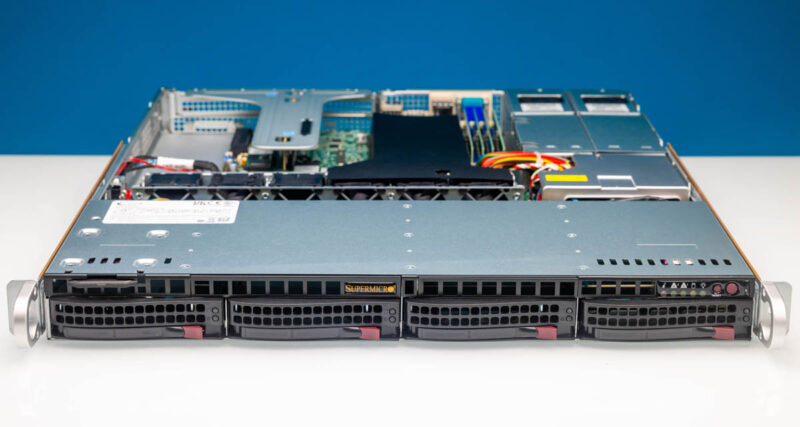
We can see that this is a Supermicro CSE-813 chassis variant with four 3.5″ drive bays.
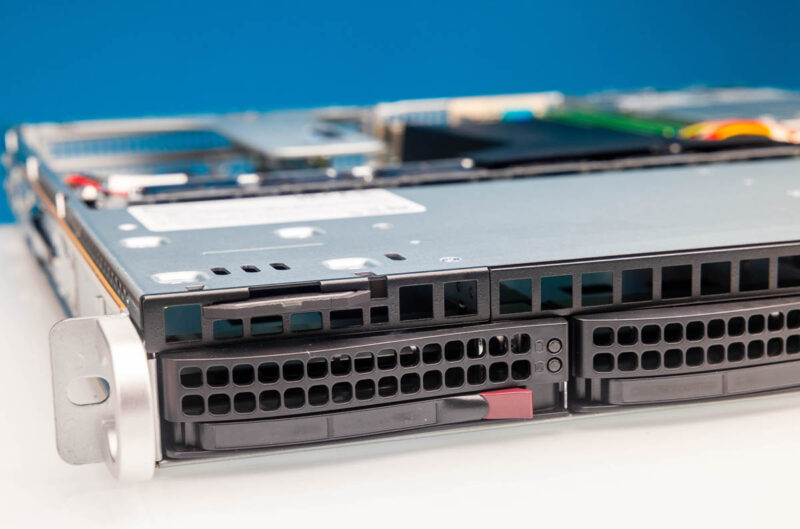
This is a class of server that still often sees 3.5″ disks deployed in applications like dedicated hosting clusters. Still, 2.5″ drives can still be used with an adapter.
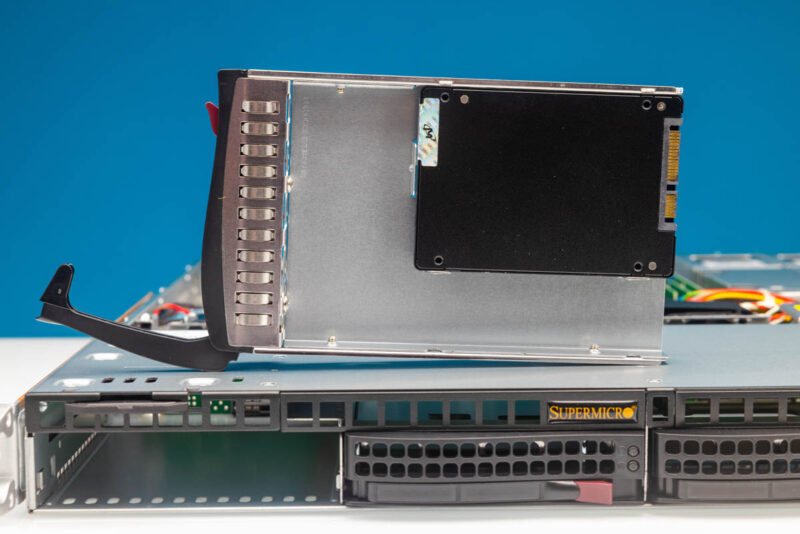
On the right side, we have our status LEDs and the power and reset buttons.
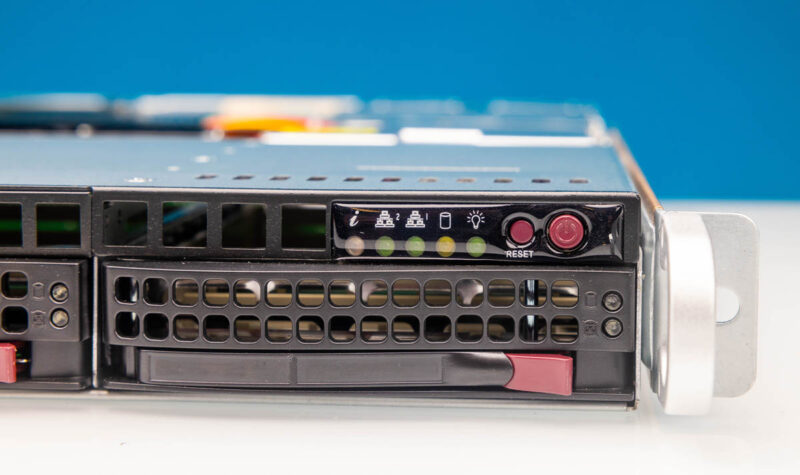
On the back of the system, we have a fairly standard Supermicro layout.
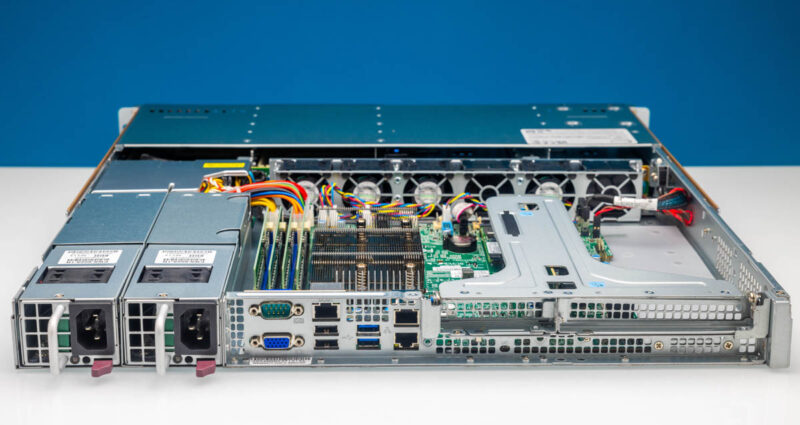
On the right side, we have a 600W power supply. Generations ago, systems in this class could be powered by a 250W or 300W unit. Now, 600W power supplies are common. We can use two power supplies for redundancy.
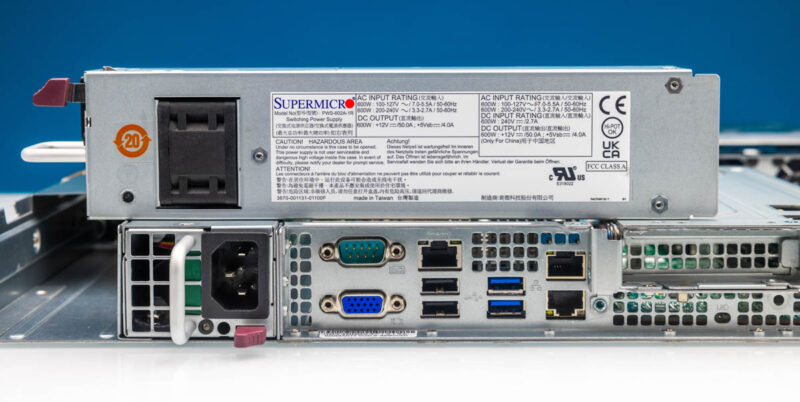
The rear I/O is very standard. There is a serial port, a VGA port, and four USB Type-A ports for local access. Two of those USB ports are USB 3. There is an out-of-band management port. Finally, there are two 1GbE ports which are Intel i210-AT. The Intel i210-AT has been around for over a decade and still has more than another decade left until it is phased out. It would have been cool to see an i226 variant used for 2.5GbE, but given the support cycle of the i210 and where these are likely deployed, it makes sense. Also, this is a server using the NCSI support of the i210.
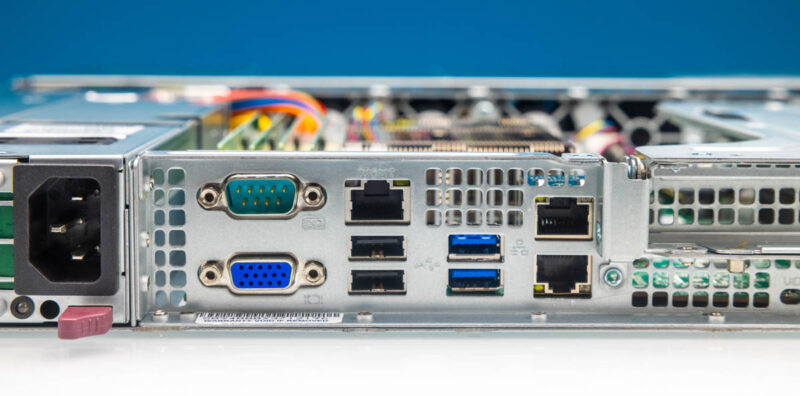
The I/O slot situation is very different. Here we get a low profile and a full-height expansion slot via riser.
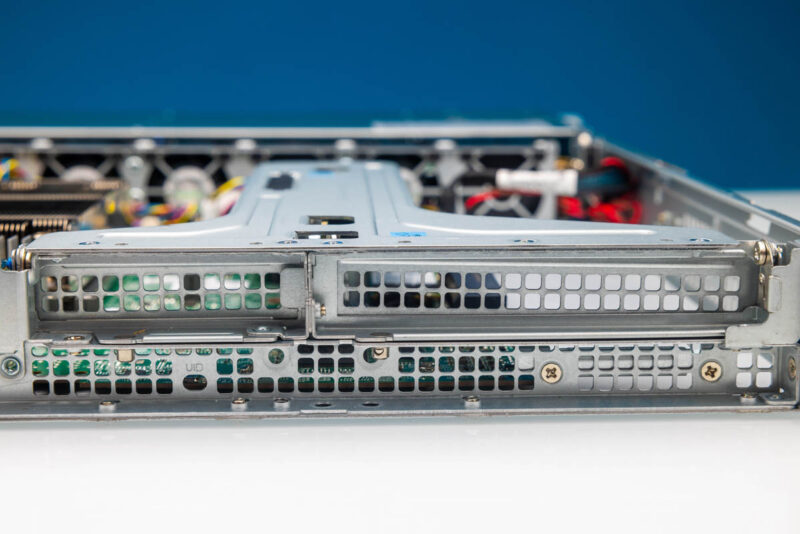
The riser auto-switches and is either PCIe Gen5 x16 on the full height slot. The low profile slot, if a card is present, can take eight of those sixteen lanes and provide an x8 link for the low profile card.
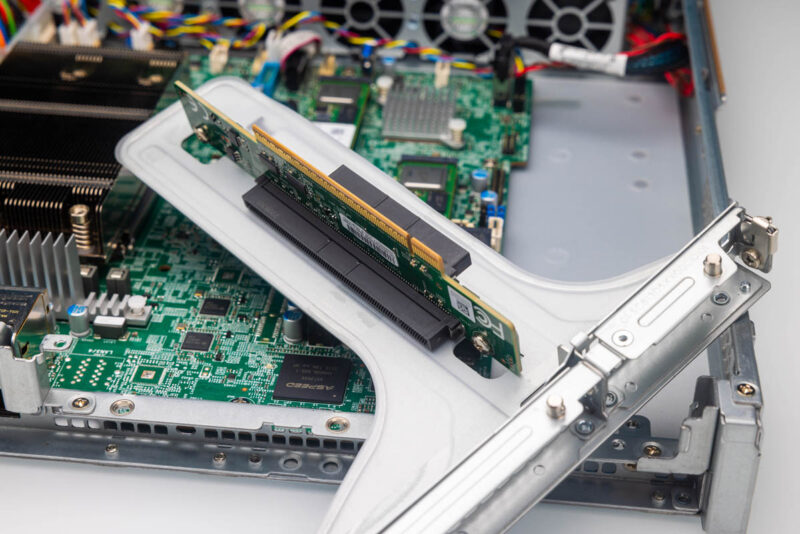
Next, let us get inside the system to see what is there.

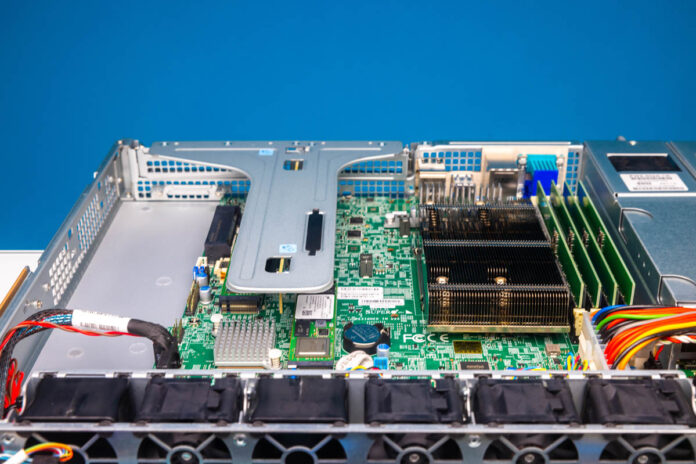



Current prices for 10 gigabit Ethernet and the limited expansion possibilities in a 1U chassis suggest systems like this should have something faster than built-in 1 gigabit Ethernet.
This server has a ton of neat little features and is very similar to the current gen of DELL 1RU servers ala R350. Love the offset CPU cooler.
Required throwaway comment: Latch that DIMM!
E3-V5/6 generation seems to be where technology peaked in terms of low idle power consumption. I have measured less than 11W at the wall with my X11SSH-LN4F (that’s for the whole system, albeit with not much attached).
Strangely, for simple homelab setups in countries where electricity is not cheap, these new boards are less desirable than the old ones.
@TurboFEM: That’s what I’m thinking, too. It looks like these days you need to go with one of these E-cores-only platforms (e.g. i3 N305) to achieve similar results, but the tradeoffs you’ll have to accept on the other hand do hurt – no ECC, limited number of PCIe lanes which are also only gen 3.
Maybe it can be accomplished with the Xeon E-2400 platform and ASPM/C-state optimisation, too?
This could be such a good platform for a home server in countries with high electricity costs…
@Patrick: What’s the noise @idle like? Do the fans ramp down enough to make it somewhat bearable?
? With ~6W on the ATX 12V cable, most of your idle power is probably being consumed by the 8 fans. Other components likely draw a bit more vs. Haswell/Broadwell: DDR5, PCI-e v4 SSD, chipset… but not that much (if you select the right SSD). The Raptor Lake is fast, but active power consumption compares poorly with (e.g.) the R7 7700, and it still has AVX-512 disabled. (As far as noise, you can build a silent machine, but naturally it takes some effort.)
The 8-core E-2300’s suffer seriously from thermal throttling which can reduce clock speeds down to as low as 3.8GHz all core, it’d have been interesting to see the E-2400 burst-temps test run for 5 minutes to see what clock speeds they settle at.
The air shroud is a necessary improvement in this system but I’m still sceptical as more air doesn’t solve the problem of poor dissipation from the IHS itself.
Do you still have the system to be able to demonstrate that?